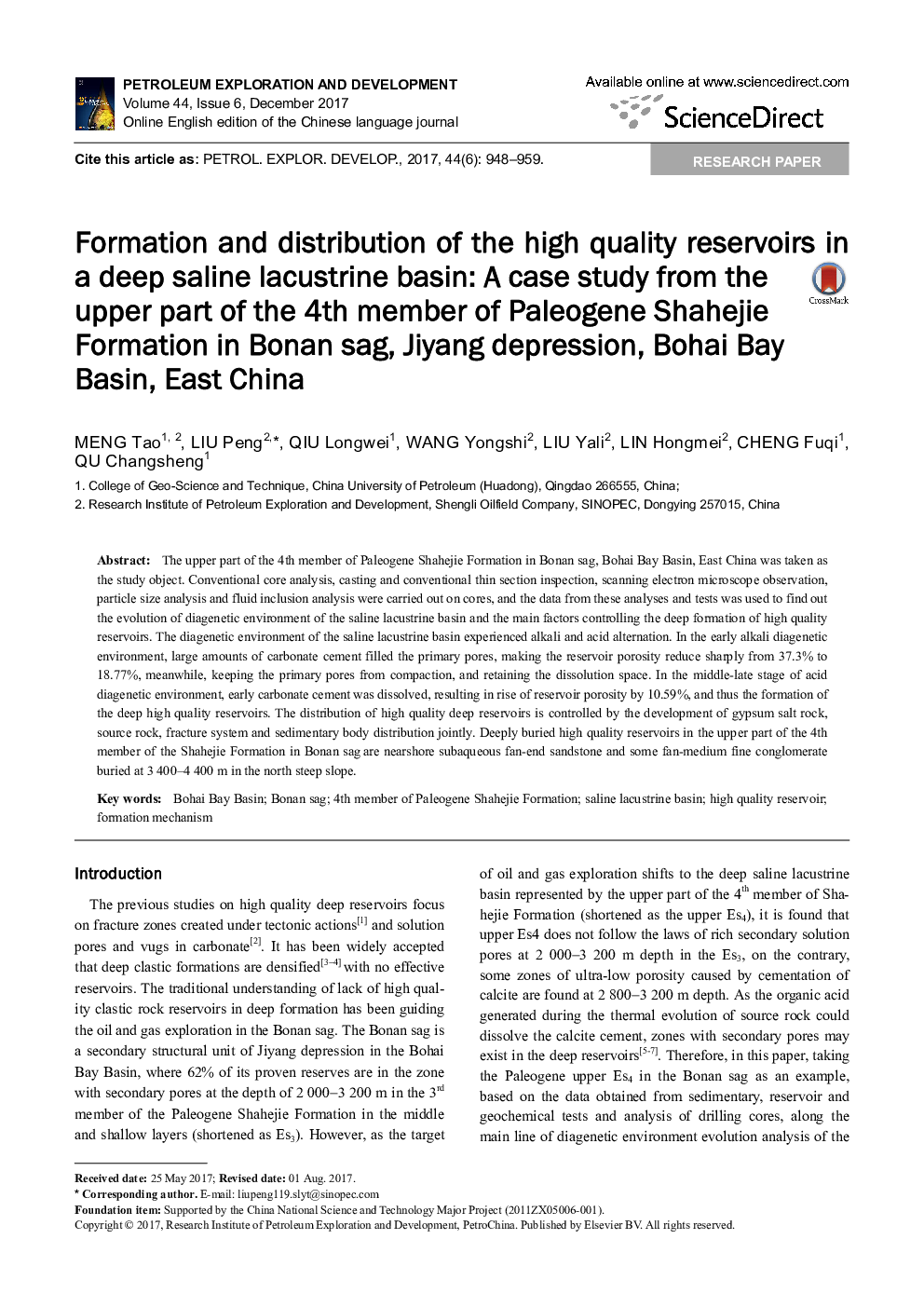| Article ID | Journal | Published Year | Pages | File Type |
|---|---|---|---|---|
| 8912199 | Petroleum Exploration and Development | 2017 | 12 Pages |
Abstract
The upper part of the 4th member of Paleogene Shahejie Formation in Bonan sag, Bohai Bay Basin, East China was taken as the study object. Conventional core analysis, casting and conventional thin section inspection, scanning electron microscope observation, particle size analysis and fluid inclusion analysis were carried out on cores, and the data from these analyses and tests was used to find out the evolution of diagenetic environment of the saline lacustrine basin and the main factors controlling the deep formation of high quality reservoirs. The diagenetic environment of the saline lacustrine basin experienced alkali and acid alternation. In the early alkali diagenetic environment, large amounts of carbonate cement filled the primary pores, making the reservoir porosity reduce sharply from 37.3% to 18.77%, meanwhile, keeping the primary pores from compaction, and retaining the dissolution space. In the middle-late stage of acid diagenetic environment, early carbonate cement was dissolved, resulting in rise of reservoir porosity by 10.59%, and thus the formation of the deep high quality reservoirs. The distribution of high quality deep reservoirs is controlled by the development of gypsum salt rock, source rock, fracture system and sedimentary body distribution jointly. Deeply buried high quality reservoirs in the upper part of the 4th member of the Shahejie Formation in Bonan sag are nearshore subaqueous fan-end sandstone and some fan-medium fine conglomerate buried at 3 400â4 400 m in the north steep slope.
Keywords
Related Topics
Physical Sciences and Engineering
Earth and Planetary Sciences
Geochemistry and Petrology
Authors
Tao MENG, Peng LIU, Longwei QIU, Yongshi WANG, Yali LIU, Hongmei LIN, Fuqi CHENG, Changsheng QU,
